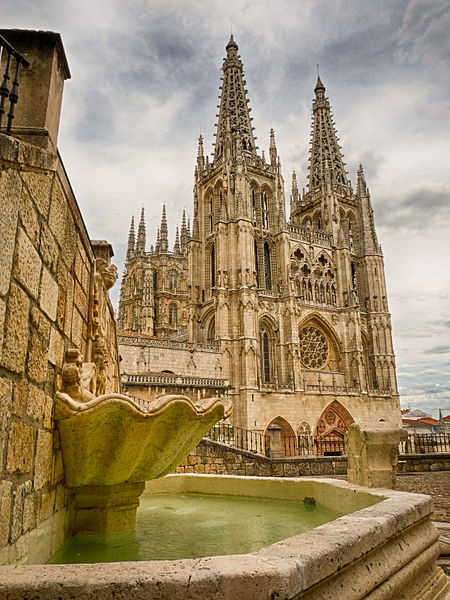Rodrigo Díaz de Vivar was a Castilian knight and ruler in medieval Spain. Fighting both with Christian and Muslim armies during his lifetime, he earned the Arabic honorific as-Sayyid, which would evolve into El Çid, and the Spanish honorific El Campeador. He was born in Vivar, a village near the city of Burgos. As the head of his loyal knights, he came to dominate the Levante of the Iberian Peninsula at the end of the 11th century. He reclaimed the Taifa of Valencia from Muslim control for a brief period during the Reconquista, ruling the principality as its lord from 17 June 1094 until his death in 1099. His wife, Jimena Díaz, inherited the city and maintained it until 1102 when it was reconquered by the Moors.
Statue of El Cid in Burgos, Spain
Here on the penultimate and final line of the document's text appears the autograph of Rodrigo Díaz: «ego ruderico, simul cum coniuge mea, afirmo oc quod superius scriptum est.» This translates as "I Rodrigo, together with my wife, affirm that which is written above."
First paragraph of the Carmen Campidoctoris, the earliest literary treatment of El Cid's life, written to celebrate El Cid's defeat of some counts and champions
Marcos Giráldez de Acosta painting (1864) depicting the "Santa Gadea Oath". In the middle of the scene, Alfonso VI (with red cape) is swearing with his right hand on the Bible that he did not take part in the murder of his brother Sancho II, while El Cid stands as a witness in front of him.
Burgos is a city in Spain located in the autonomous community of Castile and León. It is the capital and most populated municipality of the province of Burgos.
Image: Burgos city view facing south east
Image: Fachada de la Catedral de Burgos
Image: Plaza Mayor de Burgos 01
Ruins of the Castle of Burgos, of possible Visigothic origin








